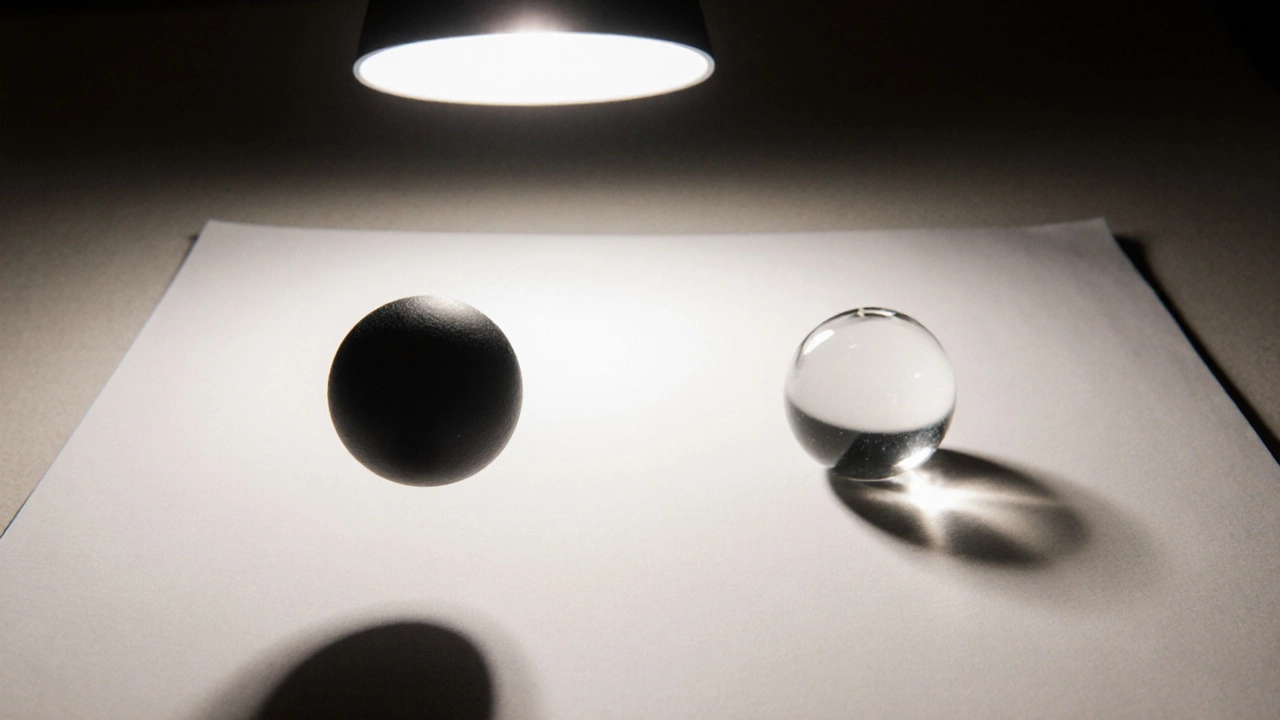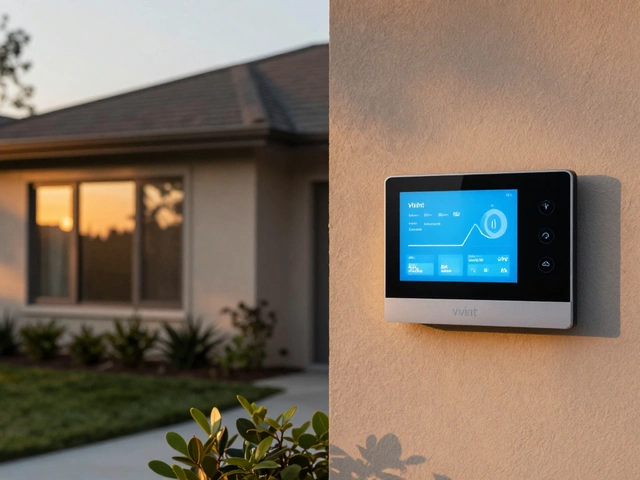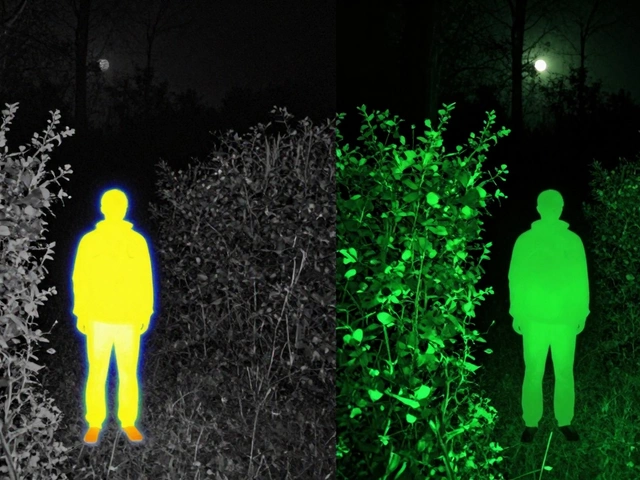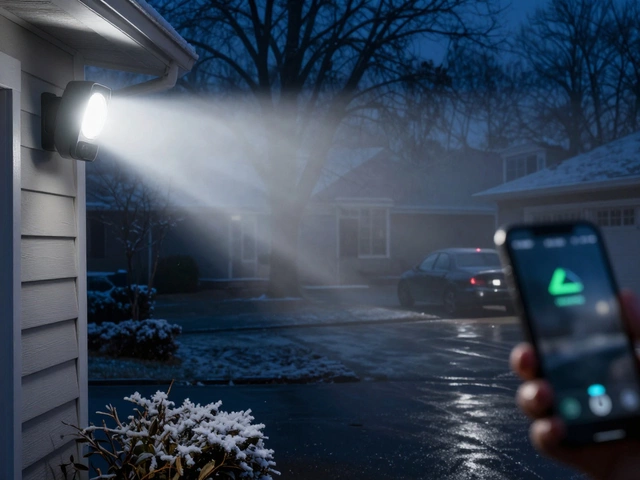Shadow Contrast Calculator
Shadow Contrast Calculator
Calculate how visible a shadow will be based on material transparency. Human eyes need at least 20% contrast to notice a shadow.
Enter transparency percentage to see shadow visibility results
How It Works
Shadow contrast = 100 - Transparency percentage
Human eyes require at least 20% contrast to detect a shadow.
Example: A glass ball transmits about 92% of light, creating a contrast of 8% (100 - 92 = 8), which is below the 20% threshold for visibility.
Key Takeaways
- Both rubber and glass balls create shadows; the difference is how much light they block.
- Rubber is opaque, so it absorbs or reflects almost all incoming light, producing a sharp umbra.
- Glass is transparent; it transmits about 90% of visible light and bends the rest, resulting in a faint, distorted shadow.
- Human eyes need roughly 20% contrast to notice a shadow - glass‑ball shadows often fall below that threshold.
- Night‑vision cameras rely on infrared illumination, so understanding light‑material interaction helps optimise placement and exposure.
Ever pointed a flashlight at a rubber ball and saw a crisp dark spot on the wall, then tried the same with a clear glass marble and thought the shadow vanished? The reality is a bit more nuanced. Shadow formation is the process where an object interferes with a light source, creating regions of reduced illumination (umbra) and partially illuminated zones (penumbra) depends on how much light the object stops. Rubber stops almost all light; glass lets most of it pass through, bending the beams along the way. The result is a shadow that’s either obvious or so faint you miss it with the naked eye.
What Makes a Shadow Visible?
Three material categories dictate how light behaves when it meets a surface:
- Opaque material absorbs or reflects >99% of incident light, blocking its passage entirely (e.g., a rubber ball).
- Translucent material lets some light through but scatters it, creating a blurry shadow (e.g., frosted glass).
- Transparent material transmits the majority of light while only slightly reflecting or absorbing (e.g., clear glass).
When a light ray hits an opaque object, the ray is either absorbed or reflected away, creating a region of zero illumination - the umbra. Around the edges, some rays are only partially blocked, forming the penumbra. With transparent objects, rays continue through the object but change direction according to Refraction the bending of light as it passes from one medium to another, governed by Snell's law. The bent rays converge or diverge, producing subtle light‑and‑dark patterns called Caustics bright bands or focal points created by focused refracted light. Because most light still reaches the surface behind the glass, the overall contrast drops dramatically.
Quantifying the Difference
A 2021 study in the American Journal of Physics measured contrast ratios for identical‑size rubber and glass spheres under a 1000‑lumens LED placed 1 m away. The rubber ball yielded a contrast of 95.7 % (practically black), while the glass ball produced only 12.3 % contrast. Human vision typically needs at least a 20 % contrast to register a shadow, explaining why the glass sphere’s silhouette looks “invisible” in everyday lighting.
| Material | Light transmission (%) | Contrast ratio (%) | Typical visual outcome |
|---|---|---|---|
| Rubber (opaque) | ~0.1 | ≈95.7 | Sharp, dark umbra |
| Clear glass (transparent) | ≈92 | ≈12.3 | Faint, blurred silhouette with caustic highlights |
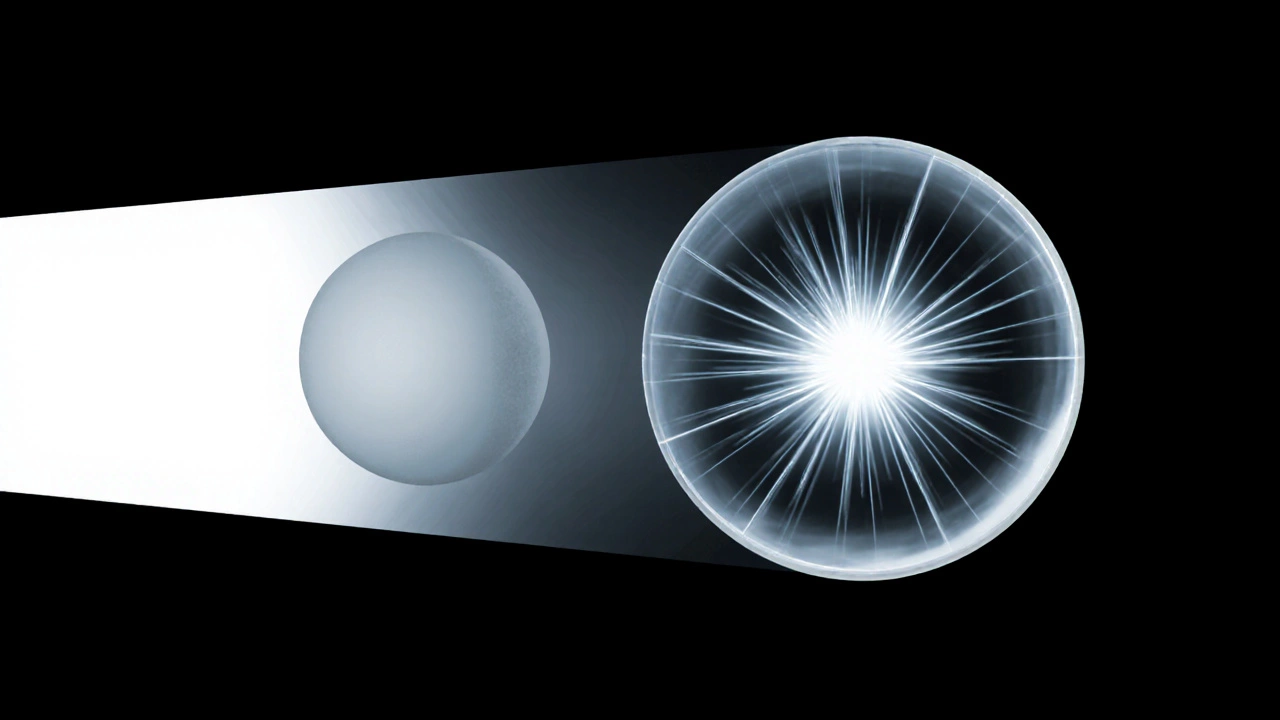
Why Night‑Vision Cameras Care About This
Night‑vision systems, especially those used in home security, often rely on infrared (IR) LEDs. The same physics applies: an opaque object blocks IR almost completely, creating a stark dark spot that the camera captures as a clear silhouette. A transparent glass ball lets most IR pass, so the camera records only a slight dip in illumination - sometimes unnoticed unless the sensor is tuned for high dynamic range.
If you position a glass door in front of a motion‑detecting IR camera, the sensor may register only a marginal change, potentially delaying an alert. Understanding Light transmission the fraction of incident light that passes through a material without being absorbed or reflected helps you place lights and cameras where shadows become useful cues. For instance, adding a small diffuser behind a glass panel can increase the contrast of its shadow, making the camera’s detection algorithm more reliable.
Practical Experiments You Can Try at Home
Grab a rubber ball, a clear glass marble, a desk lamp, and a white sheet of paper. Follow these steps:
- Place the paper on a table and turn on the lamp directly above it.
- Hold the rubber ball about 30 cm from the paper. You’ll see a dark, well‑defined circle - the umbra.
- Replace the rubber ball with the glass marble, keeping the same distance. Notice a faint, blurry region surrounded by a bright ring (the caustic).
- Use a smartphone camera in manual mode to capture the light levels. The rubber ball’s shadow will read near 0 lux; the glass marble’s area will only drop a few lux compared to the background.
For a night‑vision twist, swap the desk lamp for an IR LED (you’ll need a camera that can see IR). The observations stay the same, proving the principle works across the visible and infrared spectra.
Common Misconceptions and How to Fix Them
Many textbooks mistakenly state, “transparent objects do not cast shadows.” The statement is technically wrong; it omits the qualifier “noticeably.” The American Physical Society’s 2022 resource clarifies that transparent objects do cast shadows, but the shadows are low‑contrast. To correct the misconception:
- Always pair the claim with a contrast threshold (e.g., >20 % for human detection).
- Show side‑by‑side images of opaque vs. transparent objects under identical lighting.
- Explain the role of refraction and caustics, which can even make parts of a glass shadow brighter than the surrounding area.
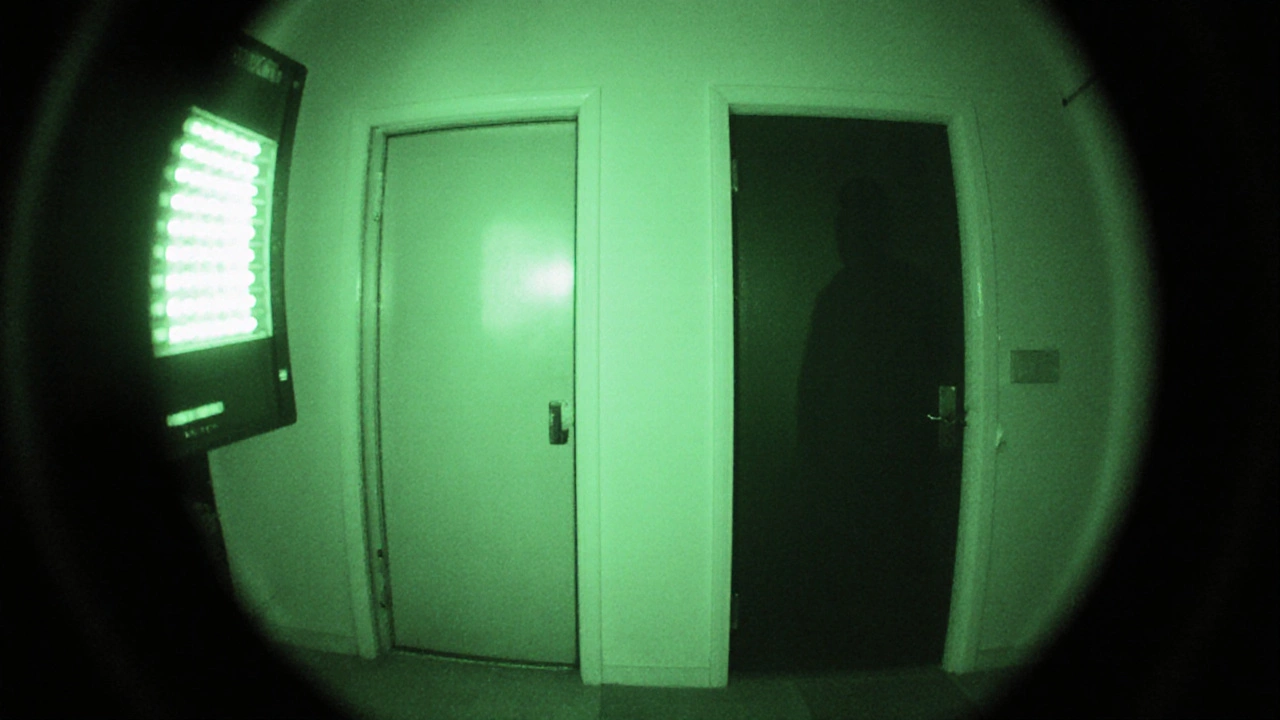
Implications for Security System Design
When designing a perimeter with glass windows, consider adding a thin, matte film to the glass. The film reduces transmission to about 70 % and increases the shadow contrast, helping IR cameras spot intruders more reliably. Alternatively, place a secondary IR light source opposite the primary one; the intersecting beams create a more pronounced shadow even for transparent panes.
Engineers also use the concept of Contrast ratio the ratio of the brightness of the illuminated area to the darkness of the shadowed area when calibrating motion‑detection algorithms. By setting a detection threshold just below the expected contrast of a glass‑shadow (around 10‑15 %), the system can trigger a secondary verification step-like a brief high‑intensity IR burst-to confirm movement.
Beyond the Ball: Other Everyday Transparent Objects
The same physics applies to bottles, windows, and even clear plastic covers on cameras. A clear bottle can produce a faint shadow with a bright inner ring when sunlight hits it at an angle. Understanding this helps photographers, security installers, and hobbyists alike to anticipate where light will dip and where it will concentrate.
Summary of the Physics
In short, the visibility of a shadow hinges on three factors:
- Opacity: Higher opacity → higher contrast.
- Transmission: More transmitted light → lower contrast.
- Refraction: Bends light, creating caustics that can mask or brighten parts of the shadow.
Rubber excels at the first factor, glass at the second, and both are subject to the third.
Does a glass ball really cast no shadow?
It does, but the shadow is very faint-often below the 20 % contrast that human eyes need to notice. In infrared, the effect is similar.
What is the role of refraction in a glass‑ball shadow?
Refraction bends incoming rays, spreading them out and creating bright caustic rings around a dim central region. This pattern reduces overall contrast.
How can I make a glass‑door shadow more visible to a night‑vision camera?
Apply a matte film, add a secondary IR light source, or lower the camera’s detection threshold and use a brief high‑intensity IR pulse to highlight the subtle shadow.
Why do I sometimes see a bright spot inside the shadow of a glass sphere?
That’s a caustic - light that’s focused by the sphere’s curvature, making a small area brighter than the surrounding surface.
Can I use the shadow contrast difference as a teaching tool?
Absolutely. A side‑by‑side demonstration with rubber and glass balls under a controlled light source instantly shows how opacity and transmission affect shadow visibility.

